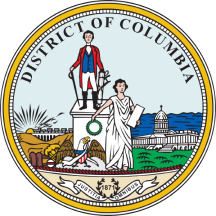Desiring Whiteness is an award-winning book by historian Caroline Séquin. It explores the intertwined histories of commercial sex work and racial politics in France and the French colonial empire, particularly in Senegal. We asked her five questions about her study.
How was sex work regulated in France?
A new system controlling commercial sex developed during Napoleon’s Consulate in the early 1800s. It was first implemented in Paris, then across France. Known as regulationism, it tolerated, rather than banned, commercial sex. But under specific conditions.
It licensed brothels, so long as the women who sold sex (it was assumed men didn’t) were registered with the vice police. They had to undergo a regular gynaecological exam to detect any sexually transmissible infections (STIs) they might inadvertently pass to their clients.
At the time syphilis was a serious public health threat. Doctors didn’t know how to treat it. Women caught with an STI or who broke the regulationist rules were interned in hospitals or prison without proper trials.
Historians have shown how regulationism was an arbitrary and flawed system. It unfairly targeted mostly working-class women for the benefit of male heterosexual desire.
What form did it take in the colonies like Senegal?
After the abolition of slavery in 1848, French colonial authorities adopted the regulationist regime that had been developed in France.
The French empire at the time included Martinique, Guadeloupe, French Guiana, Reunion, and some coastal regions of Algeria. In addition were French trading posts in Senegal and India, and several protectorates in the Pacific.
So, in Senegal regulationism was adopted in Saint-Louis and Gorée Island. There the French had built trading posts which they converted into colonial territories around the same time.
Read more: Senegal is decolonising its heritage, and in the process reclaiming its future
Regulationism became a way to control the bodies of formerly enslaved women. Colonial authorities saw them as a public health threat to the French men present in the region. They feared that, after abolition, women would resort to commercial sex as a means of survival. This would contribute to the spread of STIs. They extended these policies to all of colonial Senegal a year after abolition.
How did Senegal’s sex workers respond?
Not in the way that colonial authorities would have hoped. Many of the African women who were accused of engaging in commercial sex evaded the mandatory health checks or police registration. For example, they relocated to other areas to avoid detection.
And although the new colonial decree allowed for the creation of brothels, it appears none existed in the colony until the early 1900s. Authorities routinely lamented how the African women who sold sex did so “clandestinely”. Meaning outside licensed brothels and colonial control.
One shouldn’t dismiss the reality that some of these women were likely wrongly accused of being sex workers. Gender and racial bias shaped how medical and colonial authorities viewed Black women.
I haven’t found any evidence of brothels staffed with African women in Dakar or across colonial Senegal. All licensed brothels were staffed with European women and their services were reserved exclusively for European men.
The sexual reputation of white women greatly mattered to colonial authorities as it was supposed to reflect French moral superiority. Nonetheless, they tolerated their sexual activity because brothel keepers denied African male clients access to their businesses. This helped prevent interracial sex.
Sex with a white sex worker was preferrable to sexual or conjugal relationships developing with African women. Given the widespread assumption at the time that men had natural sexual needs, brothels were perceived as a “necessary evil” to maintain the social, moral, and racial order.
So, the regulation of commercial sex became an essential tool for the upholding of colonial rule. This increasingly relied on strict racial hierarchies and the preservation of French whiteness.
How does this play out today?
The regulationist regime was legally abolished in France – and colonial Senegal – in 1946. However, a few years after decolonisation and Senegal’s independence in 1960, a new law was established by Senegalese authorities. It required sex workers to be registered (with medical authorities, rather than police) and regularly checked for STIs. Those who failed to comply risked being jailed.
Read more: Sex, intimacy and black middle-class Christianity in South Africa – a difficult history
This is strikingly similar to the regulationist system established during the colonial period and it still stands to this day.
This was a different path than that taken by other African countries formerly under French colonial control, which associated regulationism with colonial oppression. They moved to eliminate it after independence. Some scholars, however, have lauded Senegal’s regulationist style laws as one of the main reasons why the country has the lowest reported HIV rate in the continent.
What do you hope readers will take away from your book?
The regulation of commercial sex was not simply about controlling women’s bodies and sexuality. It was also about policing racial relations.
As colonial discourses about race shifted and interracial sex and intimacy became increasingly frowned upon from the late 1800s, French authorities relied on commercial sex to limit the development of more sustained forms of intimacy across racial and colonial boundaries. In their view these threatened to dilute the myth of French whiteness by creating multiracial offspring.
What this meant for who could sell and buy sex in brothels differed in colonial Senegal and France. But, in the end, the racial logic that undergirded metropolitan and colonial brothels was the same.
Read more: Freemasons, homosexuals and corrupt elites in Cameroon – inside an African conspiracy theory
So, my book contributes to an ever-growing scholarship that has debunked the myth of France’s colour blindness, by uncovering how the regulation of commercial sex was just one of the many ways in which racial difference and hierarchies were produced and upheld in the century following the abolition of slavery.
In that sense, France was not exceptional but rather similar to other imperial nations like the United States, where the control of sex and conjugality became crucial for the racial project of white supremacy in the aftermath of the abolition of slavery.
This article is republished from The Conversation, a nonprofit, independent news organization bringing you facts and trustworthy analysis to help you make sense of our complex world. It was written by: Caroline Séquin, Lafayette College
Read more:
- Enslaved Africans, an uprising and an ancient farming system in Iraq: study sheds light on timelines
- Swimming in the Seine: an old pastime resurfaces in the age of global warming
- Cameroon’s conflict is part of a bigger trend: negotiations are losing ground to military solutions
Caroline Séquin does not work for, consult, own shares in or receive funding from any company or organisation that would benefit from this article, and has disclosed no relevant affiliations beyond their academic appointment.


 The Conversation
The Conversation
 Local News in D.C.
Local News in D.C. Raw Story
Raw Story Reuters US Top
Reuters US Top Associated Press US News
Associated Press US News AlterNet
AlterNet Ars Technica Policy
Ars Technica Policy